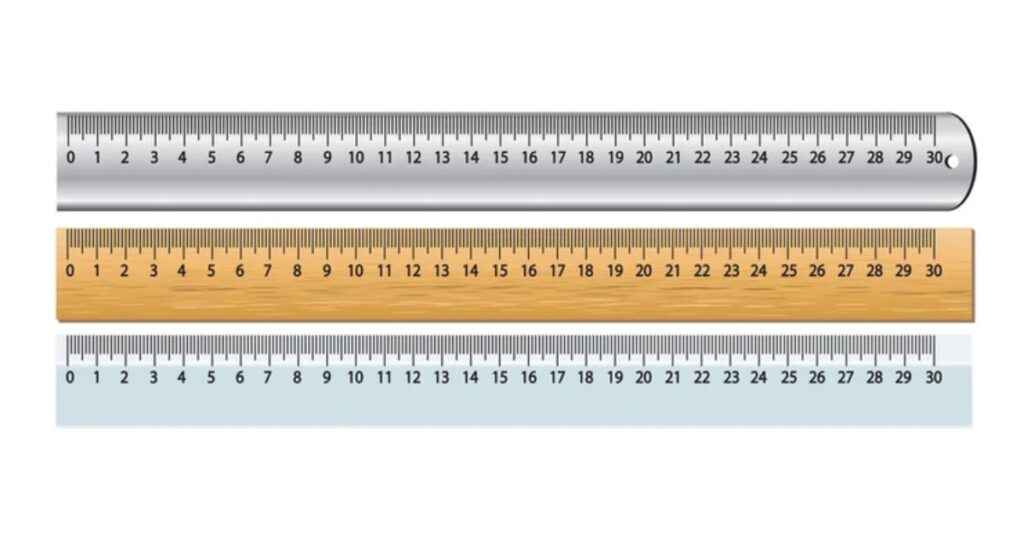Ever wondered how long 3 feet really is? Whether you’re planning home improvements, choosing furniture, or just curious about measurements, understanding this common length can be surprisingly helpful in daily life. Let’s explore everyday objects that measure exactly 3 feet, making this measurement easier to visualize.
How Long is 3 Feet?
Three feet equals 36 inches or approximately one meter. Think about the height of your kitchen counter – that’s typically 3 feet. This measurement has become a standard in construction, furniture design, and many aspects of our daily lives, making spaces comfortable and accessible for most people.
Understanding this length helps in everything from hanging pictures to spacing furniture. It’s the sweet spot for many ergonomic designs, ensuring items are within comfortable reach while maintaining proper posture.
How Tall is 3 Feet Compared to a Human?
For most adults, 3 feet reaches around hip or waist height. This measurement becomes particularly relevant when designing spaces for different age groups. In pediatric settings, it’s often used as a benchmark for child-friendly furniture and safety features.
Children around age 4 typically stand at this height, making it a crucial consideration in designing playrooms, classrooms, and other child-focused spaces. For adults, this height offers comfortable access to many daily-use items without straining or reaching.
Items That Are 3 Feet Long
Before diving into specific items, let’s understand why this measurement matters. From home design to public spaces, 3-foot lengths create comfortable, functional environments. These everyday objects serve as perfect reference points when you need to estimate or visualize this distance.
1. Traffic Cones

Standard traffic cones reach 36 inches high, making them instantly visible to drivers and pedestrians. Their bright orange color combined with reflective strips ensures maximum visibility in all conditions.
These safety devices play a crucial role in construction zones and temporary traffic management. Their height makes them substantial enough to command attention while remaining lightweight and portable.
Modern traffic cones incorporate advanced materials and design features for durability and stability. Their three-foot height proves optimal for visibility without creating unnecessary obstruction.
2. Standard Width of a Doorway

Interior doorways in modern homes typically measure 36 inches (3 feet) wide. This standardization emerged from decades of architectural experience and accessibility requirements.
The Americans with Disabilities Act (ADA) recommends this width to ensure comfortable passage for wheelchairs and mobility devices. It also allows for easy furniture movement during home transitions.
Designers often use this measurement as a baseline for creating flowing traffic patterns throughout homes. Whether it’s a bedroom, bathroom, or living room entrance, this width provides optimal functionality.
3. 3 to 4 Years Old Child

Most children between ages 3 and 4 reach approximately 3 feet in height. Boys typically measure between 35.5 to 43.5 inches, while girls range from 34.5 to 42.5 inches. This milestone represents significant developmental progress.
During this stage, children master crucial physical abilities like jumping, climbing, and balancing. Understanding their height helps parents and educators create safe, age-appropriate environments that support these developmental needs.
Parents often use this benchmark to track growth progress and ensure proper furniture sizing for their little ones. It’s fascinating how this measurement aligns with so many childhood developmental milestones.
4. Standard Shower Door Height

Modern shower doors typically start at 3 feet in width, providing comfortable entry and exit. This measurement has become standard in bathroom design for both practical and aesthetic reasons.
The width ensures adequate space for comfortable showering while preventing water spillage. It also accommodates various body types and mobility needs in daily use.
Designers often use this measurement when planning bathroom layouts to maintain proper clearance and functionality. This width creates a balance between spaciousness and water containment.
5. Baseball Bat

Adult baseball bats typically measure close to 3 feet, specifically designed for optimal swing mechanics. This length provides the perfect balance between power and control for most players.
Professional leagues regulate bat lengths between 31 to 34 inches, with many players preferring lengths close to the 3-foot mark. The science behind this measurement involves complex physics of swing speed and impact force.
Understanding bat length helps players choose equipment that matches their height and strength. This measurement has evolved through decades of baseball history to optimize player performance.
6. Width of a Small Dining Table

A small dining table typically measures 3 feet in width, creating an intimate yet comfortable dining space. This dimension allows for proper place settings while maintaining conversation distance.
Modern apartment living has made these proportions increasingly popular. The three-foot width accommodates 2-4 diners comfortably while fitting well in compact spaces.
This measurement proves ideal for both daily family meals and casual entertaining. It balances space efficiency with dining comfort.
7. Emperor Penguins

Standing majestically at 36 to 48 inches tall, Emperor penguins are nature’s perfect example of 3-foot measurements. These remarkable birds, weighing between 49 to 99 pounds, showcase impressive adaptations to their Antarctic environment.
Their distinctive black and white plumage, accented with vibrant yellow and orange neck markings, serves both practical and social purposes. The thickness of their feathers and fat layers provides crucial insulation against extreme cold.
These penguins represent one of nature’s most successful designs, perfectly proportioned for their harsh habitat. Their height helps them conserve heat and navigate through deep snow effectively.
8. A Guitar

Most acoustic guitars measure approximately 3 feet from headstock to body end. This length evolved through centuries of musical instrument development to optimize sound production and playability.
Different guitar styles maintain similar overall lengths while varying in body size and shape. This standardization helps musicians transition between instruments while maintaining familiar playing positions.
The three-foot length allows for comfortable playing whether sitting or standing. It creates the perfect balance between portability and sound quality.
9. Yard Stick

A yardstick, exactly 3 feet long, serves as the definitive measurement tool in many settings. This simple but essential tool helps maintain accuracy in construction, crafting, and educational environments.
Unlike shorter rulers, yardsticks offer extended reach and better stability for longer measurements. Their rigid construction ensures straight lines and precise measurements across their entire length.
Professional craftspeople and DIY enthusiasts alike rely on yardsticks for their durability and accuracy. They bridge the gap between smaller measuring tools and larger tape measures.
10. Irish Wolfhound Height

Irish Wolfhounds, standing 30-35 inches at the shoulder, exemplify natural occurrences of 3-foot measurements. When these gentle giants rise on their hind legs, they can reach impressive heights of up to 7 feet.
These majestic dogs serve as living reference points for understanding 3-foot heights. Their shoulder height makes them one of the tallest dog breeds, though they maintain gentle temperaments.
Their proportions have evolved naturally to support their historical roles as hunters and guardians. Modern Irish Wolfhounds continue to demonstrate how nature sometimes aligns with our standard measurements.
11. Half a Man’s Height

An average adult man stands around 5’10” to 6′ tall, making 3 feet approximately half their height. This measurement creates an intuitive reference point for many household fixtures and furniture pieces.
Understanding this proportion helps in designing ergonomic spaces. Kitchen counters, workbenches, and many other functional surfaces use this height as their standard, ensuring comfort for daily tasks.
This measurement also influences safety features and accessibility standards in public spaces. From handrails to window heights, this proportion guides many architectural decisions.
12. Three Rulers

Standard 12-inch rulers, when placed end-to-end, create an exact 3-foot measurement. This simple visualization helps students and professionals understand larger measurements in practical terms.
Educational settings often use this method to teach measurement concepts. The familiar ruler becomes a building block for understanding longer distances and proportions.
This hands-on approach makes abstract measurements more concrete and understandable. It’s particularly effective in teaching young learners about measurement relationships.
13. Three Hacksaw Blades

Standard hacksaw blades measure 12 inches each, making three blades laid end-to-end exactly 3 feet. This comparison provides DIY enthusiasts and craftspeople with a quick visual reference for measurements.
Professional workshops often stock various blade lengths for different cutting needs. Understanding these measurements helps in selecting the right tool for specific projects.
The consistency of hacksaw blade lengths across manufacturers makes them reliable measuring references. This standardization benefits both professional and hobbyist work.
Additional Important Considerations
Understanding Spatial Requirements
Three feet represents the minimum width for wheelchair accessibility in many building codes. This measurement ensures comfortable passage through doorways and corridors.
Public spaces must consider this dimension for safety and comfort. Understanding these requirements helps in both home renovation and commercial design projects.
Professional designers use this measurement as a fundamental planning unit. It influences everything from furniture placement to traffic flow patterns.
Practical Applications in Home Design
Kitchen layouts particularly benefit from understanding 3-foot measurements. This dimension often determines optimal distances between appliances and work surfaces.
Bathroom design also relies heavily on this measurement. It ensures comfortable use of fixtures while maintaining proper clearances.
Home decorators use this measurement for furniture spacing and room layout. It helps create balanced, functional living spaces.
Child Development and Safety
Understanding 3-foot measurements helps create child-safe environments. This height often determines appropriate safety barrier heights and furniture selections.
Parents can use this measurement to assess potential hazards. It helps in childproofing homes and creating age-appropriate play spaces.
Educational settings utilize this measurement for equipment and furniture selection. It ensures spaces remain accessible and safe for young learners.
Impact on Sports and Recreation
Many sporting equipment pieces incorporate 3-foot measurements. This standardization helps maintain fair play and consistent performance.
Pool depths often use this measurement as a safety benchmark. It helps swimmers and supervisors maintain awareness of water depth.
Exercise equipment and gym layouts consider this dimension for proper spacing. It ensures safe and effective workout environments.
Read Also: 12 Common Things That Are 10 Feet Long
Conclusion
Ever catch yourself wondering just how long 3 feet really is? It’s actually all around us! Think about your kitchen counter, a baseball bat, or even your front door – they’re all about 3 feet.
This length (36 inches) shows up everywhere, from the height of a 4-year-old kid to those bright orange traffic cones you see on the road. Even nature gets in on it – Emperor penguins and Irish Wolfhounds stand about this tall.
Whether you’re planning home improvements or just curious, these everyday examples make it easy to visualize 3 feet without pulling out a measuring tape.
Next time you need a quick reference, just think about your guitar length or dining table width!











